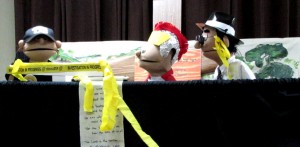by Kristi and Carol
What if …
Let’s say that you’re currently looking for a certain type of volunteer. What if you were never able to recruit more of that type? What if — despite your best efforts and most eloquent pleas — prospective volunteers stopped saying “yes” when you asked them to take a role in your organization?
A few years ago, I (Kristi) consulted with an organization we’ll call “Org-C” — “C” for chaos!!! Their leadership admitted that, to the general public, they appeared to be “running around with our heads cut off” or operating under “controlled chaos.” The challenge was to recruit more volunteers into an existing structure.
We evaluated the system and determined areas of high stress. By expanding the organizational structure, we took pressure off of them. As a result, they gradually came to a place of projecting a calm and efficient leadership presence, and new volunteers joined the team.
How can you do that?
TAKE A DEEP BREATH, AND THINK: What is stressful to you or other leaders in your organization?
In Org-C, it was easy to see the stress points. Three supervisors planned ahead. But on the program day, chaos ensued: regularly scheduled volunteers did not show up; last minute rotating subs did show up, but they hovered around the main command center desk, clogging up an already congested thoroughfare until they were sent to the right location; visitors showed up and needed to be assigned to classrooms; and invariably, some missing supplies would be needed from the back room.
STOP FOR A SECOND, AND LOOK CLOSELY: Are the job descriptions in your existing organizational structure up to date?
In Org-C’s past, when the 3 supervisors started serving, the organization was staffed with many stay-at-home moms. The moms volunteered during the week so that everything was ready. But like many organizations, Org-C felt the changes in society as women went back to work. Often “supplies” were one of the tasks that slipped through the cracks in preparation. The supervisors tried to pick up the slack on program day, in addition to data-entry in the new digital age, and making last-minute assignments for more substitutes in a growing ministry. None of these new responsibilities were in the job description.
COMPARE REALITY TO WHAT IS ON PAPER: Although capable people are working hard, do their jobs match reality?
Once everything was on paper, it didn’t take long to see that the 3 supervisors in Org-C were being stretched beyond their limits. Their main role was to supervise volunteers. With a smaller pool of volunteers, more technology, and an expanding organization, no one had quite understood how the work load of the 3 supervisors had become unmanageable.
The next step? Do something about it.
Come back for Part 2 to see what we tried.



